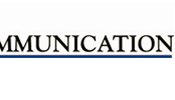

|
|
| Learn what to say... and what NEVER to say! |
|
|
Our PIE Model of Communication
|
Great Communication Skills = Lower Risk of Malpractice By Edward Leigh, MA A friend who worked as an oncology social worker for many years told me of a pediatric oncologist who was working with young cancer patient. The oncologist accidentally gave her a very large (and potentially fatal) dose of chemotherapy. The young girl survived this medical error. My first thought — that girl's parents will immediately go to an attorney. However, that was not the case. The oncologist spoke to the girl's parents and explained what happened. She said she felt terrible and said, "I'm sorry." She also said, "Based on what happened I think it would be best if your daughter worked with another oncologist." The parents said, "We don't want another oncologist. You have been so wonderful to our daughter. You were there holding her hand when she was ill from the various treatments. We want you to continue treating our daughter — we won’t have it any other way!" By the way, they also told the oncologist they had no plans to take legal action. Why did the parents have no intention of pursuing litigation? One simple reason – they liked the oncologist. In general, people don't sue people they like. We get people to like us through great communication skills. The June 4, 1997 issue of the Journal of the American Medical Association (JAMA) included an enlightening article called, "Physician-patient communication. The relationship with malpractice claims among primary care physicians and surgeons." The primary objective was to identify specific communication behaviors associated with malpractice history in primary care physicians and surgeons. The research compared the communication behaviors of "claims" vs. "no-claims" physicians using audiotapes of 10 routine office visits per physician. The study consisted of 59 primary care physicians (general internists and family practitioners) and 65 general and orthopedic surgeons and their patients. The physicians were classified into no-claims or claims. There was significant differences in communication behaviors of no-claims and claims physicians in the primary care physicians group (no differences in surgeon group). The helpful behaviors exhibited by the no-claims primary care physicians included: Length of primary care office visit Engaging in a dialogue
Physicians who have been sued for malpractice often cite "unrealistic expectations" on the part of their patients. Encouraging two-way communication helps the patient develop appropriate expectations about a medical visit, and prompts the sharing of critical information. Breakdowns in communication between physician and patient fuel distrust and pent-up anger. No one wants to feel that their concerns are ignored, nor that their problems have been minimized or disregarded. Factor in a bad outcome to the scenario and we are setting the stage for a lawsuit. On the other hand, effective communication skills tends to enhance patient satisfaction. The study identifies specific and teachable communication behaviors associated with fewer malpractice claims for primary care physicians. Physicians can use these findings to improve communication and decrease malpractice risk. |
The Center for Healthcare Communication • P.O. Box 18819 • Cleveland, Ohio 44118-0819 USA Site designed by I Am Orange Media Group |